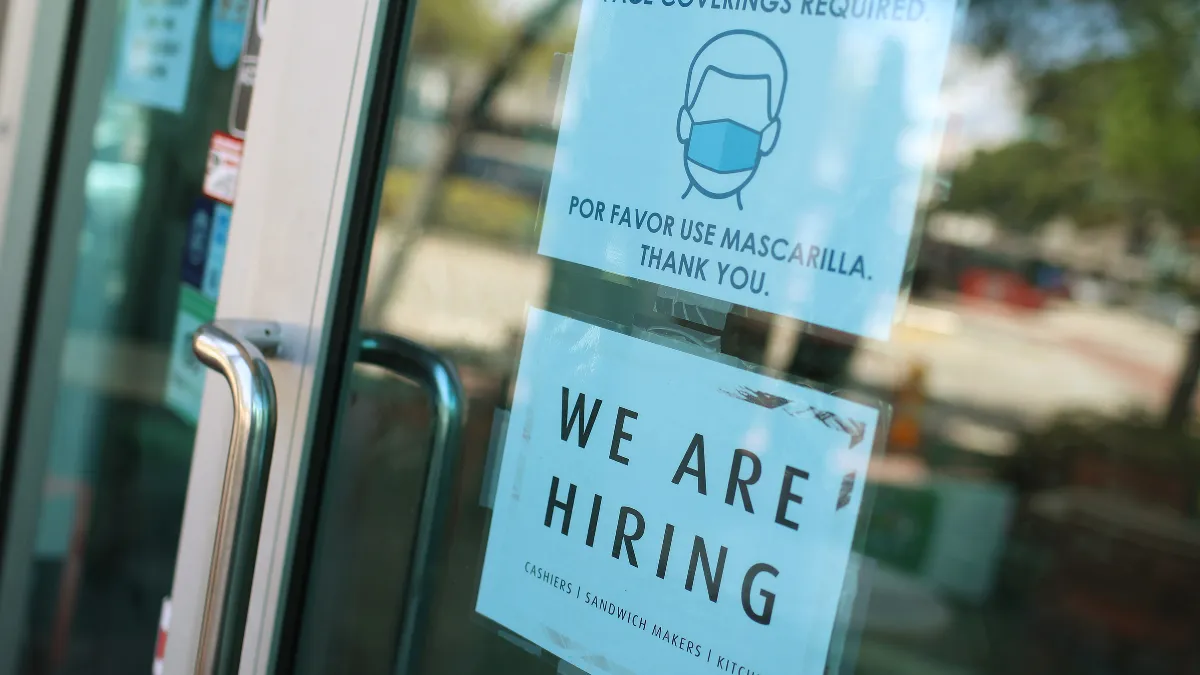Dive Brief:
- Optimism fell among small businesses in September amid persistent inflation and tight labor markets, the National Federation of Independent Business (NFIB) said, citing a survey of 537 small business owners.
- A record high 51% of business owners reported an inability to fill job openings. When small businesses looked ahead to the next six months, their level of optimism slumped to the lowest level since December 2012.
- “Small business owners are doing their best to meet the needs of customers, but are unable to hire workers or receive the needed supplies and inventories,” NFIB Chief Economist Bill Dunkelberg said in a statement.
Dive Insight:
CFOs at companies big and small face pressure to raise wages as they confront inflation-inducing labor shortages and supply chain bottlenecks.
The consumer price index rose last month at a 5.4% annual rate — the same rate as in June and July, which was the fastest pace in 13 years, the Labor Department said Wednesday. Energy prices, a leading cost for businesses, rose more than other item categories.
“Inflation is squeezing profits (the major source of operating capital for small firms) so firms are raising selling prices,” NFIB said.
Meanwhile, the labor market is unusually tight, with the number of U.S. job openings in August easing compared with July but remaining elevated at 10.4 million, the Labor Department reported Tuesday.
“Many people are still reluctant to take a job due to COVID-19 risks, especially those more public-facing jobs such as restaurants,” NFIB said.
In an attempt to attract workers, a record 42% of small businesses raised compensation in September and 30% plan to do so during the next three months, also a record high, NFIB said. Average hourly pay for private-sector workers rose 4.6% last month compared with a year earlier, according to the Labor Department.
U.S. manufacturers see workforce shortages as their biggest risk and, during the next 12 months, plan to increase wages by 3.5%, a record rate in quarterly surveys dating to 1997, according to the National Association of Manufacturers.
Business “owners are clearly trying to hire, but are not being very successful in spite of paying higher wages,” NFIB said.
CFOs seeking a clear view of the business outlook should pay special attention to changes in the labor supply, according to economists.
“The big question — for employers, markets and the [Federal Reserve] — is just how far supply will rise over the next few months, easing what seems right now to be quite intense upward pressure on wage gains,” Ian Shepherdson, chief economist at Pantheon Macroeconomics, said in a report.
The Biden administration, aiming to free up crimps in the supply chain, announced Wednesday that ports in Long Beach and Los Angeles, California, plan to operate around the clock, seven days a week. The ports handle 40% of shipping containers unloaded at U.S. docks.
“Supply chains are still in disarray, with ships and containers piling up on the coasts but only slowly being unloaded and distributed to businesses as truck drivers are in short supply,” NFIB said.













